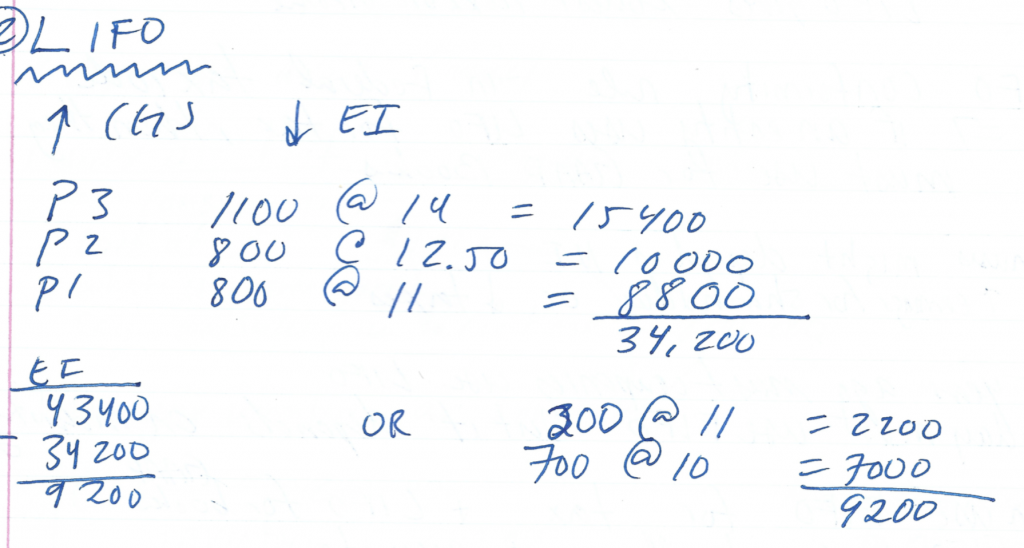Going Discipline Rogue: Why I Spent my Summer Learning Accounting
I recently finished three graduate-level business classes this summer: intro to finance, financial accounting, and managerial accounting. Why did I take finance/accounting courses when I have degrees in computer science and a career I love? Why would I let myself get “distracted” when my tenure-track clock is ticking? Let me list a few reasons and maybe you will see at least one benefit of “going discipline rogue.” I’ll start with the reasons I signed up for the classes in the first place.
Anticipated Benefits
I’m a Lifelong Learner
Simply put, it was time to learn something new, and I don’t mean a new programming language or framework. I had an itch to broaden my horizons a little bit. It might be cliche to say I love learning but I really do. I feel unaccomplished when I’m not learning something new or working towards something educationally. One of the main reasons I went to grad school in the first place was because it offered a higher degree than the one I had. I just had to have it. Perhaps I chose the tenure-track because it too offered a “higher degree” than the one I had.
Curiosity killed the cat?
I’ve always wondered about business classes and if they really are as easy as some folks in engineering/computer science jokes they are (just for the record, others have said such things, not me 🤪). It is too soon to draw a conclusion about the difficulty of business courses… I’ll weigh in my verdict on this later after gathering more data!
Start a Startup Someday Soon
Say that three times fast! It is like the classic saying, when you are young you have energy and time, but no money. When you are middle-aged you have money and energy, but no time. And when you are old you have time and money, but no energy.
Right now I have ideas and CS skills, but no business skills. I also barely have time to acquire the business skills… so maybe it wasn’t a perfect analogy to the classic saying, but you get the point, taking MBA classes may come in handy someday.
Perks of the Job
One of the benefits my employer offers is a tuition waiver to encourage faculty and staff to continue their education and take classes. I wanted to try this out and ultimately maximize my return on investment in my workplace (that’s ROI, one of the fancy financial terms/acronyms I’ve learned this summer). If I take 3 credits a semester and 5 credits a summer, I’ll complete an MBA in approximately 3.5 years. While it will cost me a considerable amount of time, it will be relatively free and fun. It’s a marathon, not a sprint.

>>Begin tangent
When I was in high school I applied to a few private universities. In an attempt to afford the tuition, I competed in weekend-long scholarship competitions, I interviewed for honors/special programs, and I sought external funding sources. I just couldn’t pull it off. I couldn’t go to a private school for college. I really don’t mind because it all worked out. Instead of four years of undergrad at a private school, I get to (hopefully) have an indefinite number of years of employment and tuition-waived courses at a private school (now that is lifelong learning!). It isn’t where you go to school or where you work, it is what you do while you’re there. Also, I find it’s okay to settle for one-time, short-term benefits so long as you’re fighting the fight for recurring, long-term benefits.
>>End tangent
Unanticipated Benefits
Now let me list a few unintended benefits I realized AFTER I started attending classes:
Street Cred with my Students
Taking classes as a student keeps you grounded as a professor. I think this is especially true when these classes are outside of your discipline (AKA comfort zone). I can relate more to my students since I now can concurrently identify as a professor and a student. I also took a graduate-level business class this spring semester and I loved telling my CS1 students, “hey, I’m taking a business class!” when I found out they are business majors. In fact, I had a Masters in Accounting student take my CS1 course this past spring. At the end of the semester, I joked around with him about a little role reversal. I asked how much he charges for tutoring because I might need to come to his accounting office hours this summer. I can get kind of preachy about how awesome CS is and it was fun being able to connect with my non-majors in their home court.
Teaching: What to do and What not to do
I performed repeated “classroom visits” of my colleagues with much more teaching experience than me. I now have new ideas on how to structure my classes from a teaching and a student perspective.
Networking
I’ve now met three professors in the business school I might not have met otherwise. This summer these professors were my professors, but now that the classes are over, these professors are colleagues that know me outside of my department/school. This is a forced form of networking that may have potential benefits down the road (??).
Fresh Ideas
I’ve drawn several connections between computer science and accounting/finance. For my programmer friends out there, did you know accounting uses JIT, LIFO, and FIFO? I sure didn’t! These acronyms mean the same thing in accounting as they do in CS (just-in-time, last in first out, and first in first out). In CS we use JIT to describe a compilation technique and LIFO/FIFO to describe common data structures covered in CS2 (stacks and queues). JIT in accounting has a few applications, one of which is JIT inventory systems. For example, Dell uses a JIT inventory system for computer manufacturing. Dell doesn’t have a large warehouse of computers sitting around waiting for sales to be shipped. Instead, Dell uses JIT to build a computer only when a customer orders it. They force their suppliers to maintain a large inventory so they don’t have to.
LIFO and FIFO are also inventory terms. An inventory is an asset and therefore needs to be valued so it can be reported in annual financial documents, specifically the balance sheet (look at me go!). This valuation process can be performed with one of three common cost flow assumptions (here are some notes straight outta my accounting notebook!):

Just a heads up, I’m about to go on a medium-length tangent explaining LIFO and FIFO inventory valuation systems because I think they are that cool. I’m calling the example, the year of the hammer.
>>Begin tangent
To describe LIFO and FIFO, I’ll borrow the example my professor used this summer involving Home Depot and hammers… Let’s say at the beginning of the year, a Home Depot had 700 hammers and at the end of the year, they had 900 hammers. Another way of saying this is Home Depot had a beginning inventory (BI) of 700 hammers and an ending inventory (EI) of 900 hammers. Throughout the year, Home Depot made three purchases of hammers to replenish their hammer inventory, but each purchase was from a supplier at a different price per hammer! Let’s summarize the “year of the hammer”:

This means Home Depot sold 2,700 hammers during the year (BI + purchases – EI = 700 + 1000 + 800 + 1,100 – 900 = 2,700).

So, what is the value of the ending hammer inventory? What was the cost of the hammers we sold? If we record the costs of the 2,700 hammers Home Depot sold using the most recent purchase prices we made, we’d have a LIFO inventory cost flow system. The LIFO system would value the ending inventory using the least recent purchase prices we made. We effectively are treating our hammer inventory like a stack!! Here is the math if you’re interested:

If you cost the hammers sold at the least recent purchase prices and value the ending inventory using the most recent purchase prices, you have a FIFO system, also known as a queue!!
>>End tangent
The night my accounting professor explained this hammer example I was super excited. As a student by night, I was so happy to be on a high-speed train from the foreign country of accounting to my home town of CS. As a professor by day, I was celebrating a new way to connect with my business students. I had a fresh, new way to explain stacks and queues. A new CS2 stacks/queues programming assignment was practically writing itself: Home Depot and hammers! Sometimes you can get lucky forging these kinds of cross-disciplinary connections, sometimes you have to signup for twice a week, three hour night business class and just tough it out.

To conclude, I might’ve spent more time than I should have this summer on business classes; however, I accomplished all of the research goals I set forth at the beginning of the summer. I had three goals to hit three paper deadlines this summer and hit all three. If there is one thing I know about myself and writing, I’m more productive when I’m busy and there is a deadline approaching. MBA classes are good for the busy part 🤓
Here’s to more years of cross-disciplinary, rogue learning,
-G
